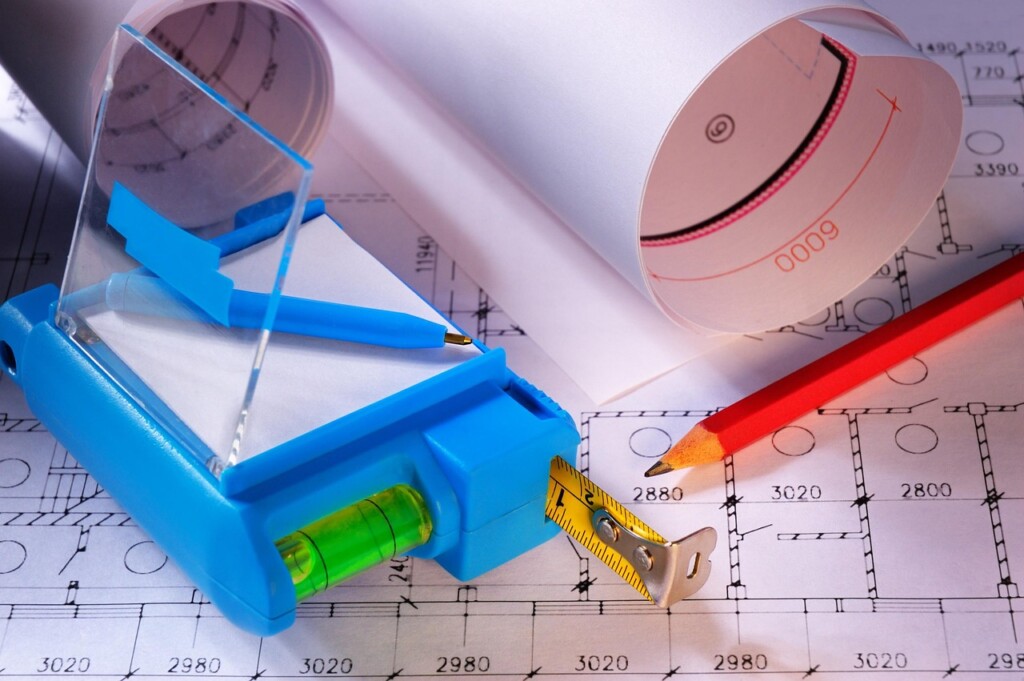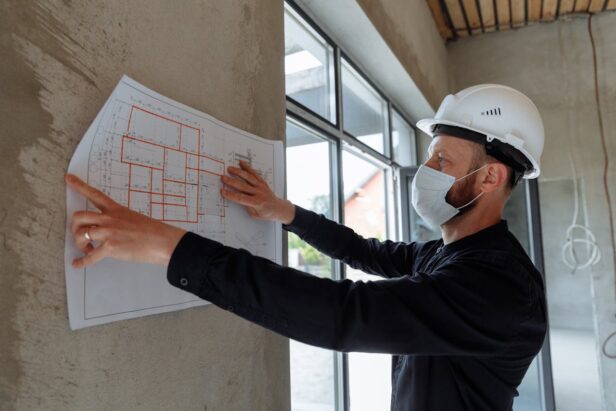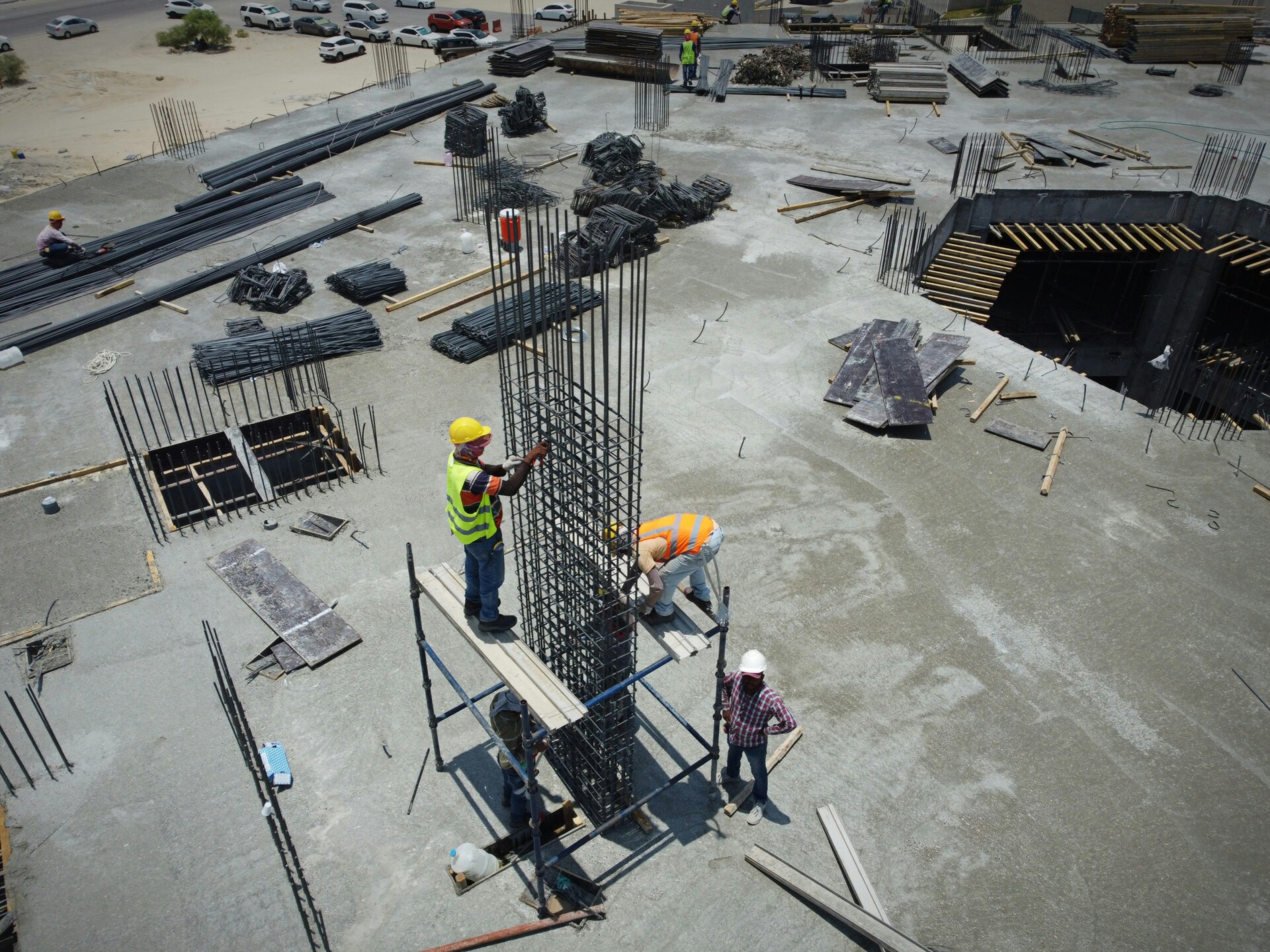Managing two separate contracts during a construction project creates unnecessary complexity and delay. Design build project delivery eliminates this challenge by using a single contract that covers both design and construction phases.
The owner works with one design-builder as the single point of contact throughout the entire project. This integrated approach promotes early collaboration between designers and contractors, delivers faster project completion, generates fewer changes during construction, and provides earlier knowledge of firm costs compared to traditional delivery methods.
How Does Design-Build Compare With Design-Bid-Build?

The fundamental distinction between design-build and design-bid-build lies in contract structure and project sequencing. Design-build operates under a single contract where one entity handles both design and construction phases simultaneously. In contrast, design-bid-build requires separate contracts for design services and construction, with each phase completed sequentially.
Design-Build Delivery Method
Design-build brings contractors into the process from project conception. This early involvement allows construction expertise to inform design decisions while design work progresses. We coordinate these overlapping phases to accelerate project schedules significantly.
The integrated approach streamlines communication through a single point of contact. When design questions arise during construction, we resolve them internally rather than coordinating between separate design and construction teams. This direct communication pathway reduces the potential for misunderstandings that can lead to costly rework.
However, design-build reduces competitive pricing pressure since owners typically select teams based on qualifications and proposed approach rather than solely on lowest bid. Additionally, when problems occur, determining specific responsibility between design and construction aspects can become challenging within the integrated team structure.
Design-Bid-Build Traditional Method
Design-bid-build maintains clear separation between design and construction responsibilities. Architects and engineers complete 100% of design documentation before contractors submit competitive bids. This sequential approach provides transparency in role definition and allows for open competition on construction pricing.
The separate contracts create natural checks and balances. Designers focus exclusively on meeting owner requirements without construction cost considerations, while contractors compete aggressively on pricing for well-defined scope. Owners maintain greater control over team selection and can replace underperforming parties more easily.
The sequential nature of DBB, however, extends total project duration. Each phase must complete before the next begins, preventing the schedule compression possible with overlapping work. Late-stage constructability issues frequently emerge when contractors encounter unbuildable design elements, leading to change orders and schedule growth.
Design-bid-build also places greater coordination responsibility on owners. They must manage communications between separate design and construction teams, resolve conflicts, and make decisions when the two parties disagree on solutions. This increased owner involvement requires more internal project management resources and expertise.
Comparative Project Outcomes
Research indicates design-build projects experience shorter timelines and fewer change orders compared to design-bid-build alternatives. Federal Highway Administration studies show design-build projects demonstrate 9% reduction in total project duration and 13% shorter construction phases.
However, design-bid-build often produces more competitive initial pricing through open bidding processes. The transparent cost comparison allows owners to evaluate multiple approaches and select the most economical option. Design-build proposals may include higher contingencies to account for design risks and unknowns that emerge during integrated delivery.
Cost growth patterns differ between methods. Design-build typically experiences fewer but larger individual change orders, while design-bid-build generates more frequent smaller changes due to late-stage constructability discoveries. The integrated design-build approach allows us to identify and resolve potential conflicts earlier in the process, reducing overall project cost growth.
What Are The Core Steps In A Design-Build Process?
The design-build process unfolds through eight sequential phases that guide projects from initial site evaluation to final handover. While some steps may overlap to accelerate delivery, each phase builds systematically toward successful project completion.
Site Selection And Due Diligence
We begin by identifying suitable sites and conducting comprehensive due diligence. This includes zoning verification to confirm permitted uses, topographic and boundary surveys, and geotechnical investigations to assess soil conditions and bearing capacity.
Environmental assessments identify potential contamination or regulatory constraints that could impact construction feasibility. These early investigations prevent costly surprises and establish realistic project parameters before design begins.
Project Conception And Feasibility Analysis
During this phase, we work with owners to establish clear scope, budget, and schedule targets with early input from our architectural and engineering partners. This collaborative approach allows us to assess constructability and identify potential challenges before they become design constraints.
We evaluate the project’s technical feasibility, regulatory requirements, and market conditions. This analysis helps owners make informed decisions about whether to proceed and establishes the foundation for all subsequent planning.
Preliminary Design And Cost Estimation
We utilize Building Information Modeling (BIM) and Virtual Design and Construction (VDC) tools to create early visualizations that align scope, budget, and timeline expectations. These digital models allow all stakeholders to understand spatial relationships and identify conflicts before detailed design begins.
Cost models developed during this phase provide owners with reliable budget forecasts. The integration of design visualization with cost estimation ensures that concept design decisions align with financial parameters from the outset.
Design-Build Team Selection
Rather than focusing solely on lowest price, we recommend owners issue requests for proposals (RFPs) that emphasize value and qualifications. This approach attracts teams capable of delivering innovation and problem-solving throughout the project lifecycle.
We evaluate potential team members based on relevant experience, technical capabilities, and cultural fit with project goals. The selection process considers both individual firm strengths and how well the assembled team collaborates as an integrated unit.
Collaborative Design Development
Our design phase involves developing conceptual plans into detailed construction documents while continuously refining budget and schedule projections. We define performance requirements early and establish shared goals that align all team members toward common objectives.
Regular design reviews with the owner ensure that evolving plans meet functional requirements and aesthetic expectations. This iterative process allows for adjustments before construction begins, reducing the likelihood of costly changes later.
Contract Finalization
Once design reaches sufficient detail, we finalize contract terms that clearly define scope, schedule, and cost parameters. This step establishes the legal framework for construction and clarifies responsibilities for all parties.
We ensure contract terms address risk allocation, change order procedures, and communication protocols. Clear documentation at this stage prevents disputes and establishes accountability measures for successful project delivery.
Construction Management And Execution
During construction, we manage all subcontractor relationships, coordinate daily work activities, and maintain regular communication with the owner through established reporting channels. Our construction management approach emphasizes quality control, safety compliance, and schedule adherence.
Project Closeout And Documentation Transfer
At project completion, we conduct final inspections, compile all required documentation, and transfer operational information to the owner. The unified team structure simplifies closeout procedures since all documentation resides with a single entity.
We provide comprehensive as-built drawings, equipment manuals, warranty information, and maintenance schedules. This thorough documentation handover ensures owners have the information needed for effective facility operations and future modifications.
What Benefits, Risks, And Procurement Options Should Owners Weigh?

Core Benefits That Drive Project Success
Design-build delivers measurable advantages that directly impact project outcomes. Higher quality results emerge when architects, engineers, and builders collaborate from day one rather than working in isolation. This collaboration drives innovation as teams identify creative solutions during design instead of encountering problems later during construction.
Faster delivery becomes possible through overlapping design and construction phases. We coordinate these phases simultaneously, reducing overall project timelines compared to sequential approaches. Cost-effective delivery follows naturally as early builder involvement prevents expensive redesigns and reduces change orders that plague traditional methods.
Better risk allocation shifts responsibility to parties best equipped to manage specific challenges. Design-builders assume both design and construction risk, providing owners with earlier cost certainty rather than leaving them exposed to price surprises during bidding. Fewer changes and claims result from integrated teams working toward shared goals instead of protecting separate contractual interests.
Key Risks To Consider
Less competitive price discovery represents the primary concern with design-build procurement. Unlike traditional bidding where multiple contractors compete on identical plans, design-build proposals often include different approaches that make direct price comparisons difficult. This can limit cost competition compared to hard-bid scenarios.
Blurred accountability becomes problematic when roles and processes lack clear definition. Without proper contract structure, determining responsibility for issues can prove challenging since design and construction overlap under one entity. We prevent this through detailed contract language that defines roles, responsibilities, and decision-making authority throughout the project.
Procurement Approaches That Fit Different Needs
Best-value selection represents the most common procurement method, allowing owners to evaluate both qualifications and price together. This approach weighs technical expertise, project approach, and cost rather than selecting based solely on lowest price. Research shows that best-value selection works well when owners can develop clear, non-prescriptive requirements and need cost certainty early in the process.
Two-Step Best Value expands this approach by first qualifying teams based on experience and capabilities, then requesting design and cost proposals from shortlisted firms. This method reduces proposal costs for design-builders while ensuring only qualified teams compete. The first step focuses purely on qualifications, while the second step evaluates technical proposals and pricing.
Progressive Design-Build takes a different approach by selecting teams primarily on qualifications, then developing scope and price collaboratively. This method provides maximum flexibility for complex or evolving projects where requirements may change during design. An off-ramp option allows either party to terminate the relationship if they cannot agree on final terms.
Owner Readiness And Preparation
Advancing preliminary design to about 10-15% completion before procurement provides the foundation for successful selection. This level of design development secures necessary approvals, establishes realistic project parameters, and attracts innovative solutions from competing teams. Less development may lead to unrealistic proposals, while more development can limit design-builder creativity and value engineering opportunities.
We recommend owners complete site investigations, secure key permits, and establish clear performance criteria before launching procurement. This preparation enables design-builders to submit realistic proposals and reduces the risk of major changes during project delivery.
Defining Owner Responsibilities
Owners typically retain responsibility for project financing, long-term operations, and maintenance under standard design-build contracts. However, design-build-maintain arrangements bundle ongoing maintenance responsibilities with the design-builder to align lifecycle performance incentives. This approach works particularly well for infrastructure projects where long-term asset management drives value.
Clear definition of the owner’s role in design reviews prevents conflicts and delays. We establish review schedules, approval thresholds, and communication protocols that allow owner input without disrupting design-builder workflow. This balance maintains collaborative benefits while preserving owner oversight.
Essential Contract Elements
Risk allocation provisions must clearly define which party manages specific project risks. We typically assume design and construction risk while owners retain risks related to site conditions, regulatory changes, and scope modifications. Clear risk allocation prevents disputes and ensures appropriate contingencies.
Change management procedures establish how modifications are identified, priced, and approved throughout the project. Effective change procedures include clear authorization levels, pricing methodologies, and schedule impact assessments. These systems maintain project momentum while protecting both parties’ interests.
Communications plans define reporting requirements, meeting schedules, and decision-making authority. We establish regular touchpoints with owners while maintaining day-to-day project control. Dispute resolution mechanisms provide structured approaches for addressing disagreements before they escalate to formal claims or litigation.
Conclusion And Next Steps

Contract development requires particular attention to risk allocation, change procedures, and communications protocols. Define how decisions will be made, establish clear milestones for design commitment, and create dispute resolution processes that promote collaboration over confrontation. Consider bundling long-term maintenance responsibilities to align the design-builder’s incentives with lifecycle performance rather than just initial construction costs.
When evaluating teams, look beyond price to assess qualifications, collaboration history, and cultural fit for your project goals. The integrated nature of design-build makes team chemistry and communication skills as important as technical capabilities. Teams that demonstrate successful design-build experience, particularly on similar project types, typically deliver better outcomes than those new to the delivery method.
Ready to explore how design-build can accelerate your next project while managing risk and cost? Contact EB3 Construction to discuss your specific goals and requirements.




